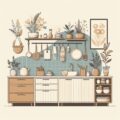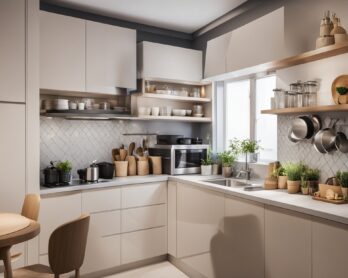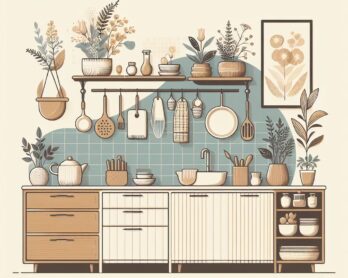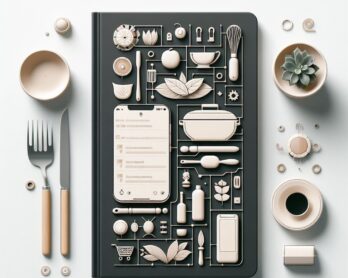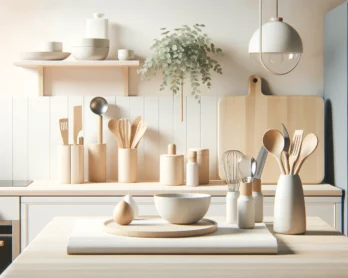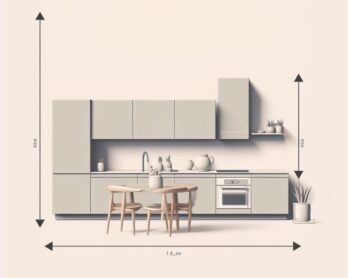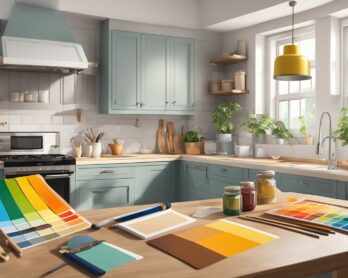In the age of digital convenience, homeowners looking to refresh their kitchens have powerful tools at their fingertips—painting apps specifically designed for kitchen renovation projects. These applications offer a vast palette of colors and the ability to visualize different paint options within a virtual kitchen setup. They bridge the gap between imagination and reality, giving users the confidence to choose paint colors that will enhance the heart of their home.
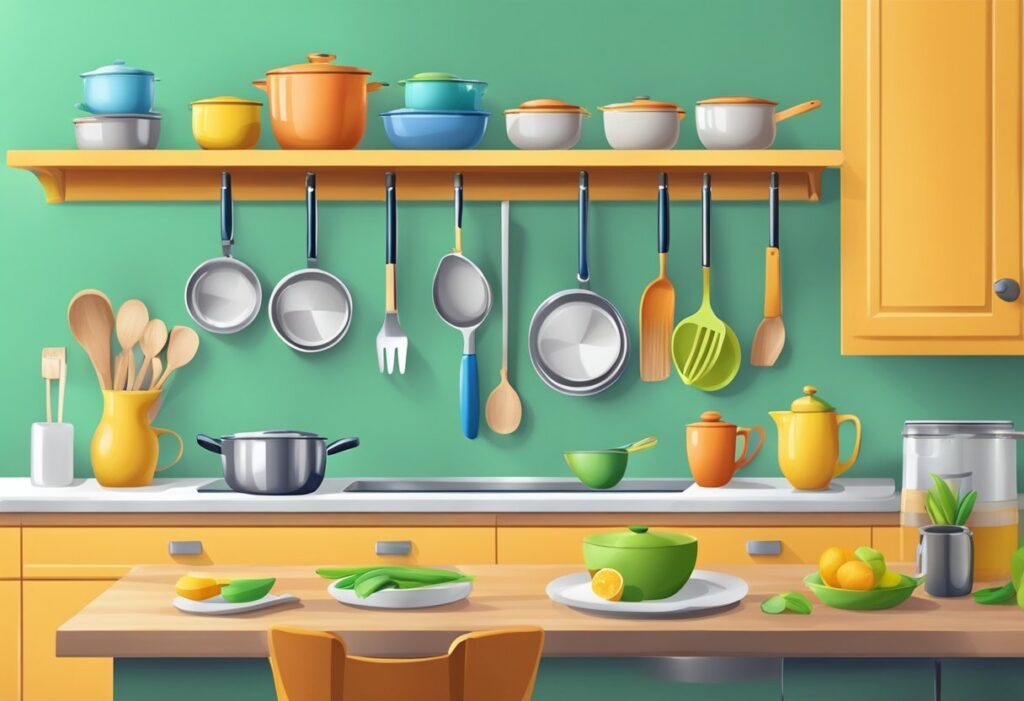
Renovating a kitchen is a significant undertaking that benefits greatly from careful planning. Painting kitchen apps support this process by providing interactive features that simulate various paint colors on kitchen walls, cabinets, and even on accessory spaces. From seeing how natural light affects paint hues to exploring color harmony with countertops and backsplashes, these tools help in making informed decisions without the mess of sample pots and swatches.
The Project Color app by The Home Depot, for example, empowers users to browse colors, see how these colors look in different interior spaces, and find coordinating shades. Other applications, such as ColorSnap Visualizer, bring augmented reality into play, allowing users to instantly visualize any color on their own kitchen walls through their device’s camera. With these intuitively designed apps, homeowners can embark on their painting projects with a clear vision of the end result.
Understanding Paint and Color Theory
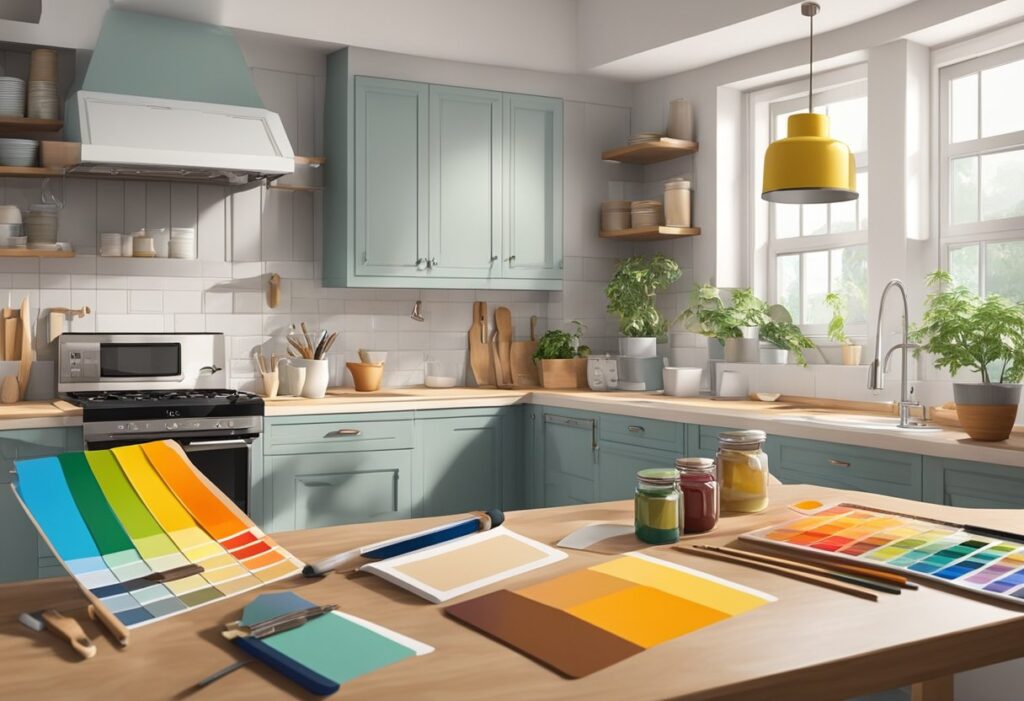
When painting a kitchen, selecting the right paint colors can transform the space into an inviting area that reflects both style and function. The foundation for choosing these colors begins with an understanding of color theory and the psychological impact that colors have in a design setting.
Exploring Color Families
Color families are groups of colors that share a common hue and exhibit a relationship on the color wheel. Each family contains a variety of shades and tints, providing a broad palette from which to choose. For instance, the red color family includes variations from soft pink to deep burgundy, each bringing its own dynamic to the space.
Primary Colors:
- Red
- Yellow
- Blue
Secondary colors, such as green, orange, and purple, are formed by mixing primary colors. Tertiary colors are created by mixing primary and secondary colors. Paint apps often have features like color match tools that help users select complementary colors and create a harmonious color scheme.
The Psychology of Colors in Kitchen Design
The colors chosen for a kitchen’s design not only affect the visual aesthetics but also have the power to influence mood. For example, blue tones can evoke feelings of calm and cleanliness. Meanwhile, warmer colors such as red may stimulate appetite and conversation.
Bold colors like red can create a vibrant and energetic space, suitable for lively social kitchens, while softer shades bring about a more serene atmosphere.
Impact of colors:
- Red: Increases appetite, energizes
- Yellow: Uplifting, welcoming
- Green: Soothing, fresh
Understanding these psychological effects allows homeowners and designers to tailor the emotional ambiance of the kitchen through the strategic use of paint colors.
Kitchen Design Principles
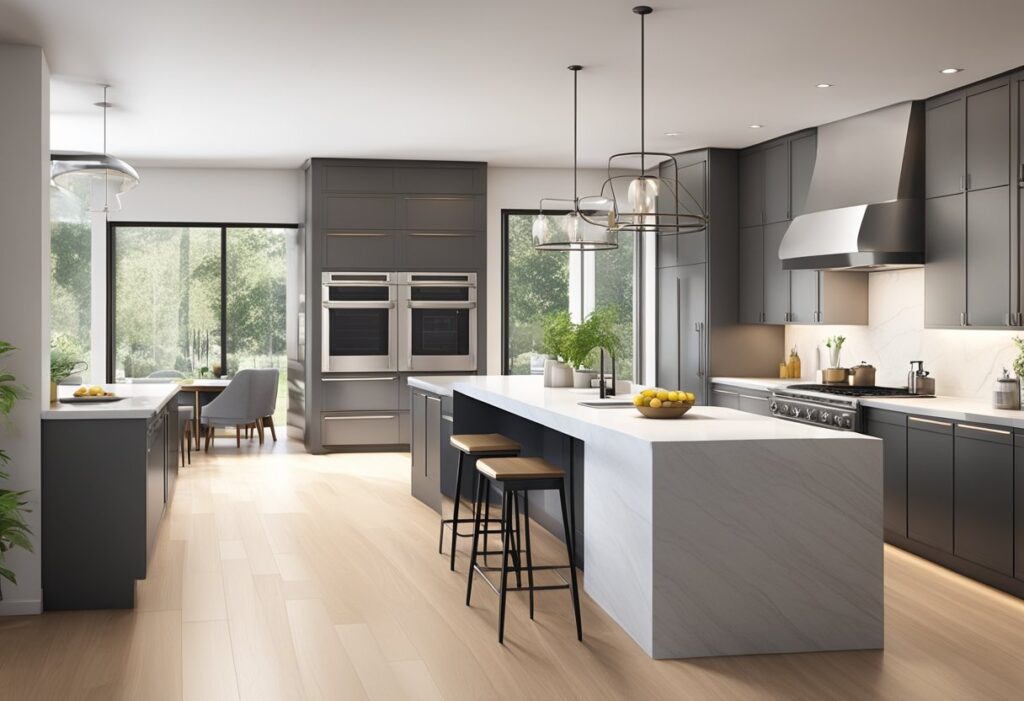
In kitchen design, attention to detail and proper material selection are paramount. The principles of design guide homeowners in creating a functional and aesthetically pleasing kitchen space.
Choosing Countertops and Cabinets
Countertops bear the brunt of kitchen activity, so choosing the right material is crucial. Homeowners tend to favor granite and quartz for their durability and ease of maintenance. Cabinet choices often reflect one’s personal style and the kitchen’s overall theme. Shaker-style cabinets could provide a timeless look, while a flat-panel option might lend itself to a more modern aesthetic.
- Countertop Materials:
- Granite: High durability
- Quartz: Non-porous and stain-resistant
- Cabinet Styles:
- Shaker: Characterized by a five-piece door with a recessed center panel
- Flat-panel: Simple, clean lines for a minimalist look
Selecting the Right Flooring
Flooring must be both practical and cohesive with the kitchen’s design. Tiles and hardwood are popular choices due to their longevity and variety in textures and colors. One should ensure the flooring is resistant to spills and traffic, considering the kitchen is a high-use area.
- Flooring Options:
- Ceramic Tiles: Easy to clean, available in various designs
- Hardwood: Warm look, can be refinished
Door Styles and Hardware Preferences
The visual impact of door style should not be underestimated. It contributes significantly to the kitchen’s character. Choices range from raised panel doors which convey a traditional look, to slab doors which are sleek and modern. Hardware adds a finishing touch and can be decisive in the overall look, with options ranging from stainless steel handles to brushed nickel knobs that complement the cabinetry.
- Door Styles:
- Raised Panel: Elevated center panel for a classic appearance
- Slab: Smooth, unadorned doors for a chic, contemporary vibe
- Hardware Selections:
- Handles: Can be bold or subtle, influencing the kitchen’s style
- Knobs: Smaller detail, but crucial in the aesthetics and function
Innovative Painting Apps
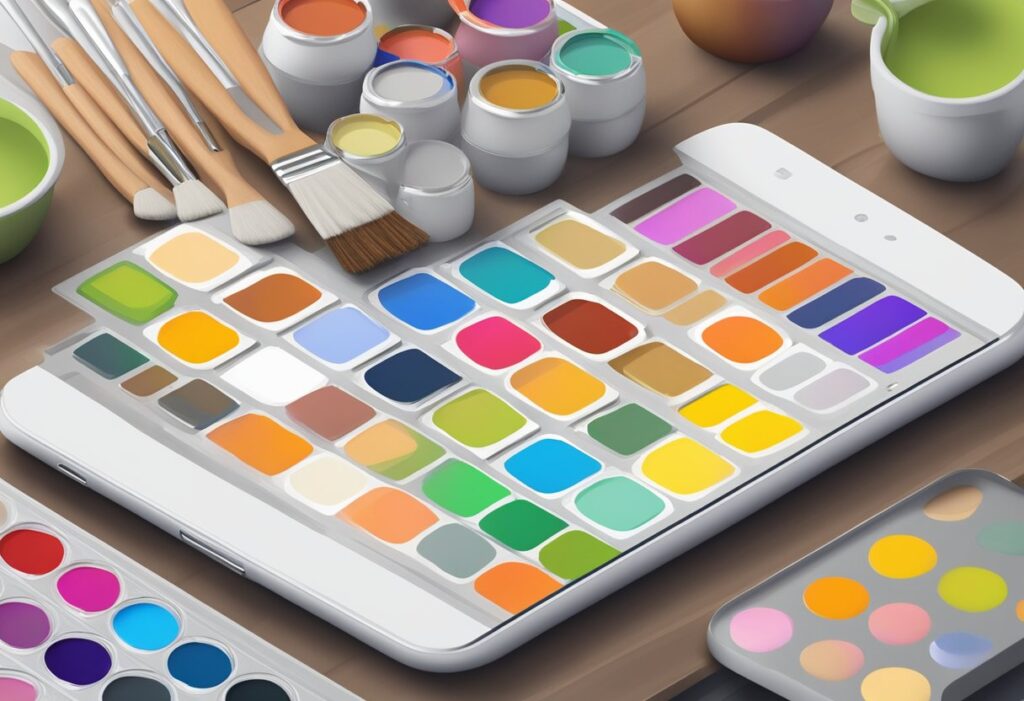
In the realm of home improvement, innovative painting apps have transformed how individuals envision and plan changes to their kitchen spaces. These apps incorporate advanced technology to provide users with powerful color inspiration tools, interactive planning capabilities, and before-and-after visualizations.
Paint Color Discovery Tools
Apps like Paint My Place are exceptional for those searching for the perfect hue. They enable users to trial various paint colors in real-time, directly on images of their kitchen. Equipped with extensive color databases from renowned paint brands, these tools simplify the process of paint selection, ensuring that one can discover the optimal color to match their design vision.
Interactive Planning Tools
For individuals aiming to reconstruct their entire kitchen, applications like Planner 5D offer a comprehensive solution. They grant the ability to create detailed floor plans and 3D renderings, allowing users to meticulously plan out kitchen dimensions, furniture placement, and color schemes. As a result, Planner 5D serves as a pivotal resource for both DIY enthusiasts and professional designers alike.
Before and After Visualizers
Technological innovation has led to the development of features such as Sherwin-Williams’ Color Visualizer, which boasts the ability to not only apply colors virtually but also compare before-and-after scenes. These visualizers are essential for users to confidently finalize their color choices by witnessing the potential outcome, minimizing the risk of dissatisfaction with the final result.
Step-by-Step Painting Guide
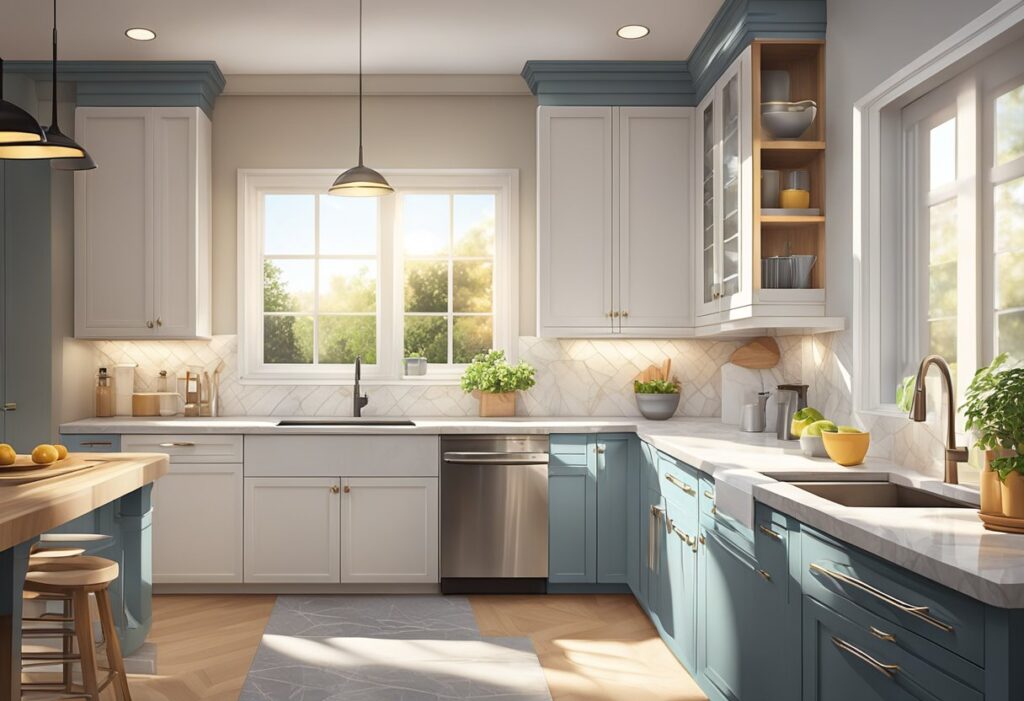
Embarking on a kitchen cabinet painting project requires a clear roadmap. This guide breaks down the process into manageable steps, providing both DIY techniques and professional insights to ensure a smooth and durable finish.
DIY Painting Techniques
One begins by meticulously preparing the surfaces, ensuring that cabinets are clean, sanded, and free of any grease or dirt. For those choosing to use DIY methods, it’s recommended to apply a high-quality primer such as those offered by Benjamin Moore or Valspar, which are proven to create an ideal surface for the topcoat. During the application, homeowner painters should employ a combination of brushes for detailed areas and foam rollers for flat panels, ensuring a smooth, stroke-free finish.
Professional Tips for a Perfect Finish
Professional painters emphasize the importance of not rushing the process. High-grade paint brands like Behr and PPG suggest waiting for the primer to dry completely before lightly sanding it for the smoothest possible base. It’s advisable to apply at least two coats of paint, allowing ample drying time between each. A pro tip is to use a paint sprayer for the most uniform coat, although this requires some practice to master. When painting with a brush, always maintain a wet edge to avoid lap marks, and finish with long, smooth strokes to prevent visible brush strokes.
Finding Inspiration
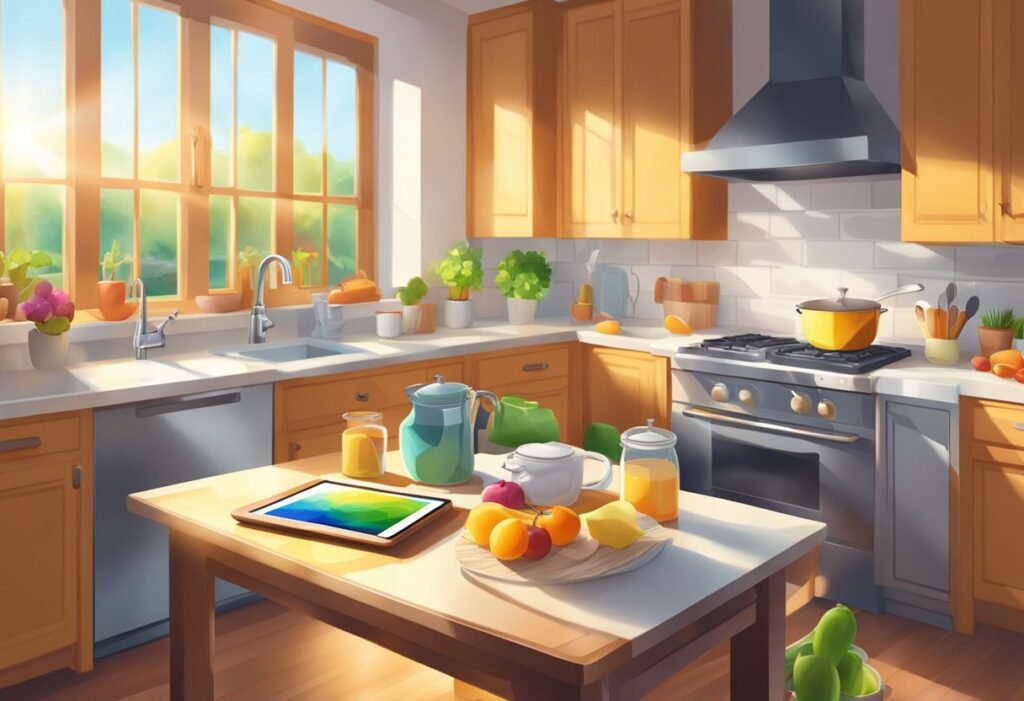
When planning to paint a kitchen, finding the right inspiration is crucial. It’s about visualizing potential outcomes and clarifying preferences for both interior and exterior spaces.
Leveraging Social Media and Design Platforms
Social media and design platforms are treasure troves of inspiration. Platforms like Pinterest and Instagram allow one to explore a wide array of kitchen designs. On these platforms, users can find images of everything from a rustic living room to a sleek, modern bedroom, providing a broad spectrum of stylistic choices. Specific hashtags like #HGTVHome bring out curated interior designs that are often trendsetters.
One can also turn to professional design platforms like Houzz, where it’s possible to view high-quality images of professionally designed spaces and even upload a picture of their own space to see how others have transformed similar kitchens.
Utilizing High-Quality Images for Inspiration
For those seeking a more focused approach in their hunt for the perfect kitchen paint color or design, high-quality images can serve as detailed guides. The Project Color™ The Home Depot app, for example, assists users in visualizing different paint colors in their kitchen by allowing them to upload a photo and sample various color palettes.
This method of using high-resolution images helps individuals to scrutinize how different hues and shades would look in their own kitchen, be it in the bright morning light or the subdued glow of evening, ensuring their choice complements every aspect of the room—from the interior elements to the exterior facade that influences the kitchen’s lighting and mood.
Color Selection Tools
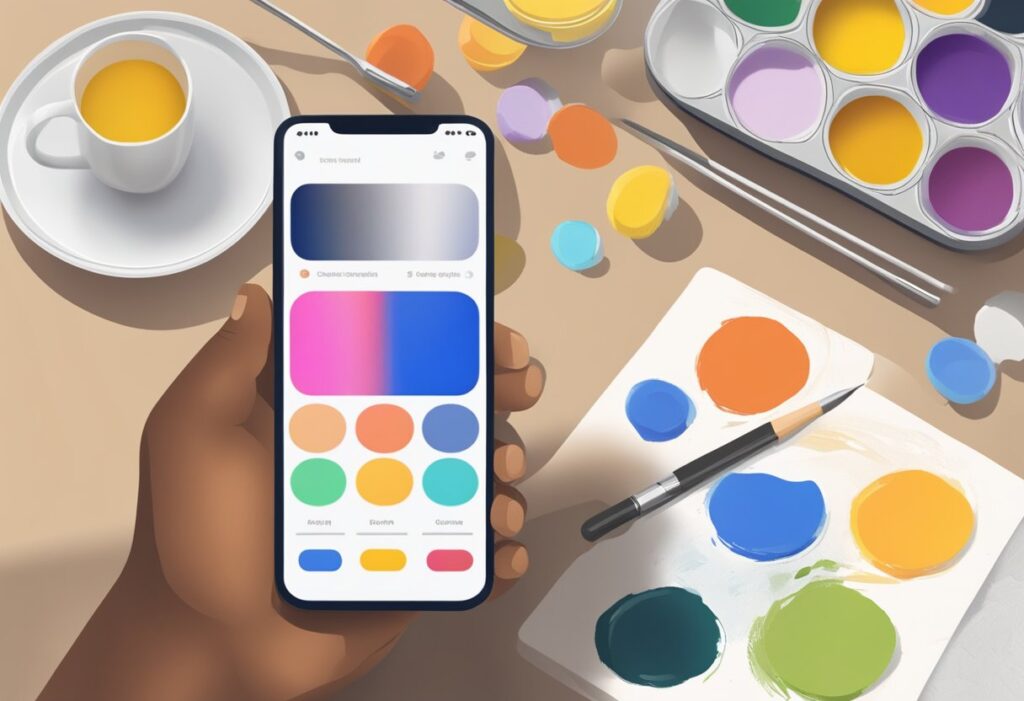
When embarking on a kitchen painting project, selecting the right paint color is critical for achieving the desired ambiance and style. The market now offers advanced tools to simplify this process, from online color matching systems that provide a high-tech approach to finding the perfect shade, to the traditional use of color swatches and the convenience of ordering samples online.
Online Color Match Systems
Online color match systems, such as the ColorSnap® Visualizer, allow homeowners to digitally test paint colors in their kitchen using real photos. These systems provide a user-friendly interface where one can see how a particular shade or finish will look even before purchasing a single can of paint. By uploading photos of the kitchen, users can apply hundreds of color options and find the perfect match with ease.
Using Color Swatches Effectively
Using color swatches effectively is a vital step in the color selection process. Rather than relying solely on digital renderings, they get a tangible sense of how different colors will look under the unique lighting conditions of their kitchen. Homeowners are encouraged to place color swatches in different areas and observe how they change in natural and artificial light, ensuring that the chosen paint color will look consistently appealing throughout the day.
Ordering Samples Online
For homeowners who prefer to test paint colors more thoroughly, the option to order samples online is available. This provides an opportunity to apply a small amount of paint to walls and observe how the color behaves over a larger area and under varying lighting conditions. This hands-on method complements digital tools and swatches, offering a full spectrum approach to selecting the ideal paint color for one’s kitchen. Companies like PPG Paints facilitate this process, making it easy for users to order samples directly from their platform.
Practical Features in Painting Apps
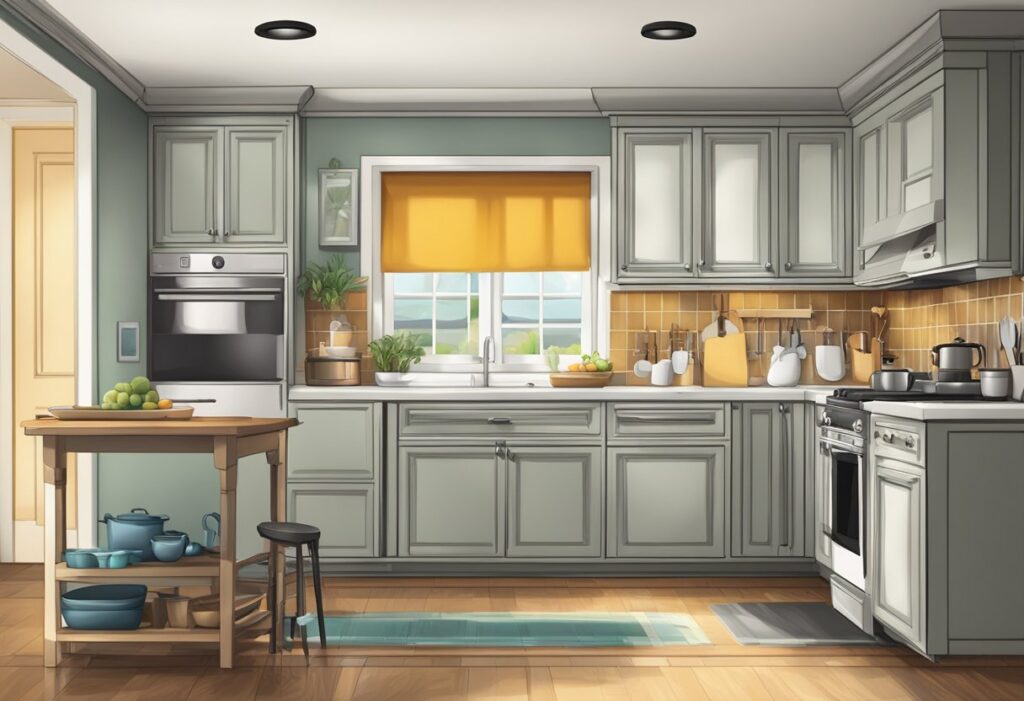
Modern painting apps offer a variety of practical features designed to assist users in choosing the perfect paint for their kitchen with ease and precision. These features focus on saving and sharing ideas, refining choices through search and filters, and facilitating purchases with in-app shopping integration.
Save and Share Options
Painting apps allow users to save their designs and color choices, which is crucial for referencing and revising decisions over time. For instance, one might save different color schemes and share them with family members or a professional designer for feedback. Apps like Home Harmony enable users to keep a visual record of their paint choices, ensuring they can revisit and adjust them as needed.
Advanced Search and Filter Capabilities
To help users navigate the extensive variety of colors, painting apps incorporate advanced search and filter functions. These tools allow the user to search by hue, saturation, brightness and even by specific brands, like those available at The Home Depot. By applying filters, users can quickly shortlist colors that meet their specific criteria, such as complementing the kitchen’s natural light or matching existing countertops.
Shopping and Purchase Integration
Comprehensive painting apps integrate shopping and purchase directly within the platform, streamlining the process from selection to application. Users can browse the paint store’s inventory, view prices, and make a purchase without leaving the app. For example, Project Color™ by The Home Depot offers this functionality, making it convenient to buy the chosen paint once the decision is made, all backed by the data and inventory associated with a trusted retailer like The Home Depot.

